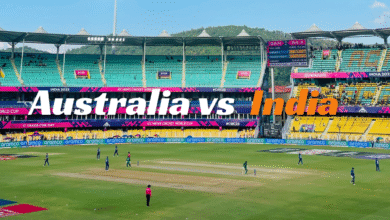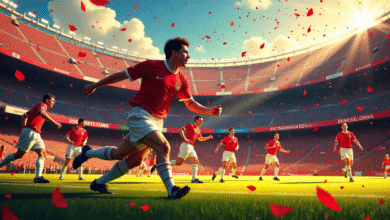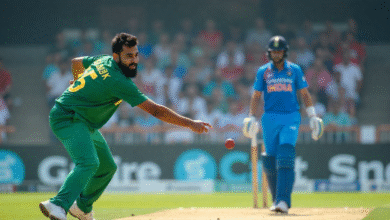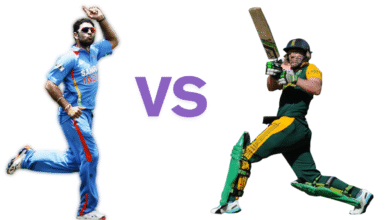Cristiano Ronaldo’s Transfer Fees and the Economics of a Football Icon
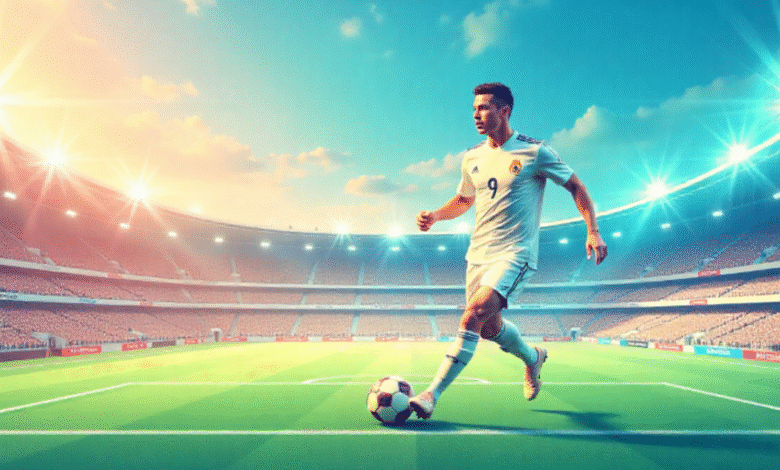
Cristiano Ronaldo is not only one of the greatest players in football history but also one of its most valuable assets. His journey across clubs has been defined by groundbreaking financial moves that reshaped the economics of modern football. Each Cristiano Ronaldo transfer fee tells a story of ambition, marketability, and the global appeal of a player who transcended sport.
To truly appreciate his legacy, one must go beyond the goals and trophies and analyze the numbers behind his transfers. These fees reflect not only his footballing ability but also his status as a global brand that generates revenue far beyond the pitch.
The Early Rise — From Sporting Lisbon to Manchester United
Cristiano Ronaldo’s career began in Portugal with Sporting Lisbon, but his transfer to Manchester United in 2003 was the move that introduced him to the global stage. This transition marked the beginning of his journey as an international superstar.
At the time, paying over £12 million for a teenager was considered bold. Yet Manchester United saw potential, investing in a player whose skills and charisma promised long-term rewards. This early move demonstrated how clubs were willing to take calculated financial risks on young talent with extraordinary potential.
The Historic £12.24m Fee in 2003
The £12.24 million transfer fee that brought Ronaldo to Manchester United was a record for a teenager in the Premier League at the time. It set the stage for his meteoric rise, with Sir Alex Ferguson famously convinced of Ronaldo’s talent after just one friendly.
This transfer became the premise for bigger deals to follow. As Ronaldo blossomed at United, winning league titles and his first Ballon d’Or, the financial logic behind the investment became clear—United had secured one of the greatest bargains in modern football.
The Blockbuster Transfer to Real Madrid
After six successful years at Manchester United, Ronaldo made the leap to Real Madrid in 2009. This transfer was a watershed moment in football economics, shattering records and redefining market expectations.
At €94 million, the fee was astronomical. Many questioned whether a player could ever justify such an amount. Yet for Real Madrid, Ronaldo was more than a player; he was an economic engine. Ticket sales, shirt sales, and commercial sponsorships surged almost immediately.
The €94m Fee That Shattered Records
At the time, no player had ever commanded such a fee. Real Madrid’s gamble was validated as Ronaldo delivered incredible returns on the pitch, winning four Champions League titles with the club. Off the pitch, he became the face of Madrid’s global branding strategy.
Statistics underline his impact: within a year, Real Madrid had recouped much of the transfer fee through shirt sales and commercial deals. Ronaldo proved that a transfer could be not just a footballing decision but a strategic business move.
Juventus and the €100m Shock Deal
In 2018, at the age of 33, Ronaldo made another shocking move—this time to Juventus. Many assumed that age would lower his market value, yet Juventus paid around €100 million, a staggering sum for a player in the later stages of his career.
The results silenced critics. Juventus saw massive increases in shirt sales, social media engagement, and international visibility. Even though the club’s Champions League ambitions fell short, the financial boost from Ronaldo’s arrival was undeniable.
This deal highlighted a key truth: Ronaldo’s value extended far beyond goals. His presence alone elevated Juventus commercially, proving that age could not diminish his global marketability.
Return to Manchester United in 2021
In 2021, Ronaldo returned to Manchester United in a move driven as much by nostalgia as by business. Though the transfer fee was significantly lower than in previous moves, the impact was still profound.
The reunion sparked a surge in merchandise sales, ticket demand, and media coverage. Fans worldwide rushed to buy shirts bearing his famous number 7. United’s social media following exploded, further proving Ronaldo’s unmatched influence.
By comparing his first and second stints at United, it becomes clear that his transfer fees reflect different stages of value—first as a young prospect, and later as a proven global icon.
Marketability Beyond Transfer Fees
While Ronaldo’s transfer fees are staggering, his value cannot be measured by fees alone. His brand power has consistently generated billions for clubs and sponsors. Shirt sales often sold out within hours of his transfers being announced. Sponsorships surged as brands competed to associate with him.
Beyond the clubs, Ronaldo’s personal endorsements—from Nike to luxury lifestyle brands—have added to his financial legacy. His ability to bridge football with fashion, fitness, and lifestyle makes him a unique commercial powerhouse.
This illustrates a broader truth: a transfer fee may secure a player’s services, but Ronaldo’s real value lies in his ability to shape culture and business far beyond football.
Cultural Impact of Ronaldo’s Record-Breaking Fees
Ronaldo’s massive transfer fees have shaped fan conversations as much as his performances. Each deal became a global event, sparking debates about football economics, player value, and the balance between sport and business.
Fans engage with these stories not just through news outlets but also across interactive platforms. Communities such as ufabet club provide spaces where fans can follow legendary players like Ronaldo while also engaging with sports culture more broadly.
At the same time, modern football fandom merges financial curiosity with interactive participation. Many fans explore guides like วิธีแทงบอลออนไลน์, connecting their love for football with deeper engagement in both sport and its business side. Ronaldo’s transfers perfectly exemplify this merging of worlds.
How Ronaldo’s Transfer Fees Compare to Modern Stars
To fully appreciate Ronaldo’s impact, his transfers must be compared with those of other stars. Neymar’s €222 million move to PSG remains the highest in history, while Kylian Mbappé’s potential fees may surpass even that. Yet Ronaldo’s moves are unique in consistency and timing.
Unlike Neymar, whose record fee was concentrated in one transfer, Ronaldo repeatedly commanded massive fees across different stages of his career. From his youth at United to his prime at Madrid and his veteran years at Juventus, each transfer reinforced his timeless value.
This consistency sets him apart. While markets evolve and fees inflate, Ronaldo’s transfers stand as benchmarks across multiple eras of football.
The Legacy of Cristiano Ronaldo’s Transfer Fees
Cristiano Ronaldo’s transfer history is more than a list of numbers—it is a blueprint for modern football economics. His moves highlighted the commercial opportunities tied to player branding, global fanbases, and strategic investments.
Clubs learned that signing Ronaldo meant securing more than goals; it meant unlocking new markets, boosting sponsorships, and elevating global reputation. Each fee told a story of ambition, risk, and reward.
His journey reflects the broader transformation of football into an industry where business and sport intertwine seamlessly.
Conclusion: Ronaldo’s Market Value Beyond Money
Cristiano Ronaldo’s transfer fees symbolize more than financial worth. They represent the ambition of clubs, the evolution of football economics, and the rise of players as global brands. The Cristiano Ronaldo transfer fee narrative is about influence, impact, and history.
From Sporting Lisbon to Manchester United, Real Madrid, Juventus, and back again, Ronaldo’s transfers reshaped football’s financial landscape. His journey demonstrates that true value is not only measured in euros or pounds but also in the cultural and commercial legacy left behind.
Ronaldo will be remembered not just as a record-breaker on the pitch but also as the man who redefined the economics of football.
